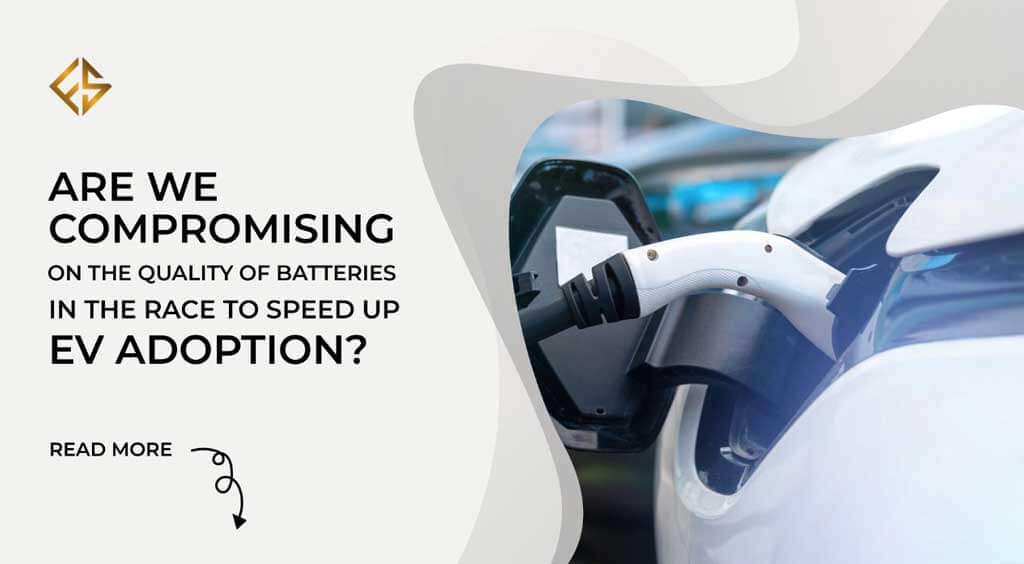Many developed, as well as developing countries, have realized the environmental damage caused by petrol/diesel vehicles. Hence, the development of electric vehicles has made a significant mindset shift towards clean energy vehicles. We have been talking a lot about faster EV adoption all around the world and a great transition has been seen in the past five years. According to a report by IEA, the number of electric cars on the world’s roads by the end of 2021 was about 16.5 million, triple the amount in 2018!
But in the race towards mass adoption of electric vehicles, are we compromising on the quality? The recent battery issues in countries like India, the US, etc. are a rising concern. In India, a lot of fire incidents of EV two-wheelers were seen due to high temperatures and lack of battery standardization. Many leading EV manufacturers were forced to take safety checks and maintain protocols before delivering the final product. In countries like USA and Canada, where the temperature is not too high, there weren’t fire breakouts. But battery drainage and battery health issues prevail very commonly. To know more about the battery issues, read this article by Forbes.
On the other hand, the supply chain for lithium-ion battery makers seems to be broken. The prices of raw materials including Lithium compounds and Spodumene to PVDF(1) over the last year have risen as much as three times! Graphite which is an essential element used in making the anodes of the battery packs, 90% of its production is concentrated in China. Due to the rise in COVID cases as well as strict lockdowns imposed all over China frequently, the export of Graphite has slowed down. The demand for batteries will continue to rise as we speed up EV adoption and so, the component part of the supply chain will need to increase as well. But in order to meet the demands, we cannot compromise on the battery quality or health.
The question is what can be done to improve the quality of batteries? To avoid fire incidents, solid-state electrolytes are replacing the flammable electrolytes, and significantly improving safety. Strict safety checks should be done by the manufacturers before the battery pack is ready to use. Battery disposal and recycling should be taken care of. For that, battery analytics can be a crucial aspect to determine the battery life span. To extend the battery life, the cut-off voltage should dynamically change with the temperature of the battery. To know more about ways to design safe and efficient EV batteries, read this article.
To Conclude
EV adoption is shifting its gears which can have a great beneficiary impact on the environment. But we need to pace up to meet the demands and ensure good quality batteries at the same time. The challenge is real but with technology and great research, we can achieve the goal of high-quality battery production across the globe!

